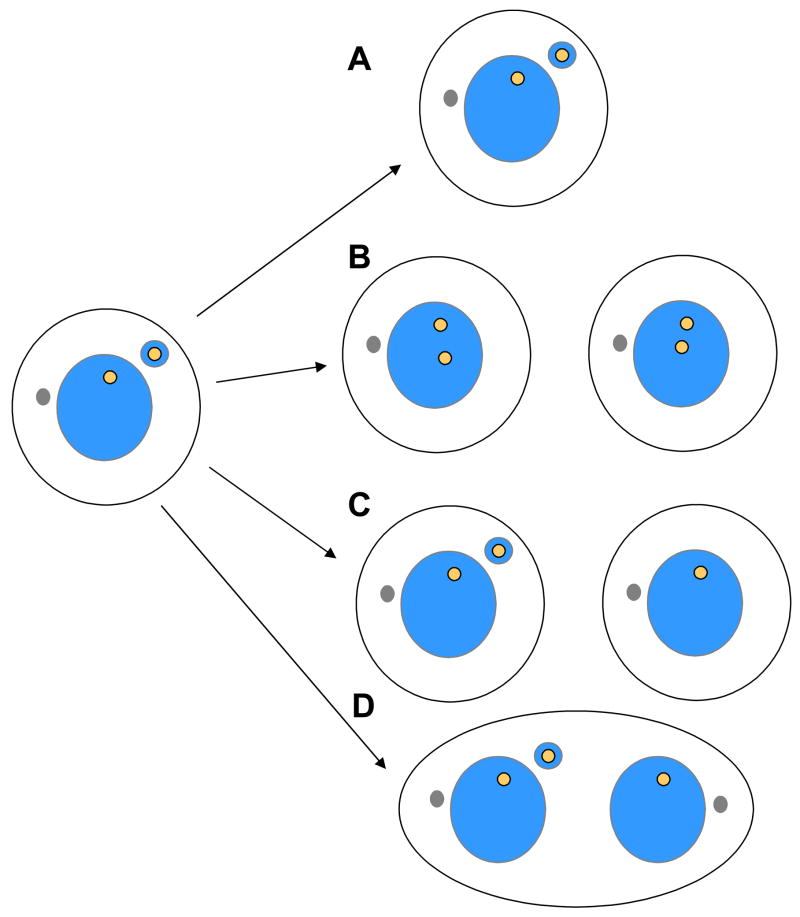Figure 3.
Potential fates of a cell containing a micronucleus. (A) A cell containing a micronucleus may fail to divide, perhaps as a consequence of activation of a DNA replication or DNA repair checkpoint pathway. It may also undergo apoptosis (not shown). (B) Alternatively, if the cell divides, the chromosome in the micronucleus may replicate normally. If it is also segregated properly in the next mitosis, two diploid cells may be produced. (C) The micronucleus may fail to be replicated and segregated. This may yield one daugter cell that retains the micronucleus, and one daughter cell that has lost the micronucleus. (D) The micronucleus may be replicated, but may not be segregated properly in the following mitosis, activating pathways that inhibit cytokinesis completion, producing a binucleated cell.

